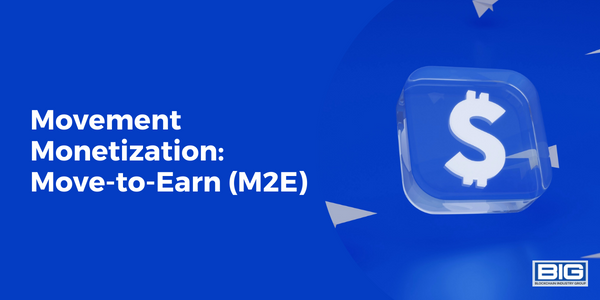
Blockchain technology has been making waves in the world of finance and beyond, with its decentralized, secure and transparent ledger system offering a range of benefits to businesses and individuals alike. But what is move-to-earn (M2E), and how does it fit into the wider blockchain ecosystem?
M2E is a relatively new concept that builds on the principles of blockchain technology, using decentralized applications (dApps) to create a new model for earning rewards and incentives. At its core, M2E is all about encouraging users to take certain actions or “moves” in order to earn rewards, whether that’s completing a task, participating in a survey, or simply engaging with a product or service.
One of the key benefits of M2E is that it allows users to earn rewards for actions that they would already be taking, rather than requiring them to make a purchase or invest money upfront. This makes it a particularly attractive option for those who are looking to earn extra income or rewards, but may not have the resources to invest in traditional methods.
But M2E isn’t just about earning rewards – it’s also about creating value. By participating in M2E programs, users are helping to improve products and services, gather valuable data, and contribute to the overall growth and success of the companies and organizations involved. This creates a win-win situation for both users and businesses, with users earning rewards for their actions and businesses gaining valuable insights and contributions from their users.
The decentralized nature of M2E allows for increased transparency and security. By using blockchain technology, M2E programs can track and verify actions and rewards in a secure, transparent manner, ensuring that users are fairly and accurately compensated for their efforts. This level of transparency and security is particularly important in today’s digital age, where fraud and data breaches are all too common.
Finally, M2E also offers the potential for greater scalability and global reach. By using the blockchain and decentralized applications (dApps), M2E programs can be accessed and utilized by users around the world, expanding the potential reach and impact of these programs.
One example of an M2E program is a fitness app that rewards users for reaching their daily step goals. By using the app and meeting their goals, users can earn points or other rewards that can be redeemed for discounts, merchandise, or other perks. This not only encourages users to stay active and healthy, but also helps the app gather data on user activity and behavior, which can be used to improve the app and its features.
Blockchain Dominance: Competing Countries
—
Blockchain vs. Bitcoin: What’s the Difference?
—
Blockchain, AI, Web3, & Metaverse’s Use Cases
Another example is a consumer survey platform that pays users for completing surveys and providing valuable feedback. By participating in these surveys, users can earn rewards such as cash, gift cards, or other incentives, while businesses and organizations gain valuable insights and data that can help them improve their products and services.
Overall, M2E is a promising new approach to blockchain technology that has the potential to revolutionize the way we earn rewards and incentives. By using dApps and leveraging the power of blockchain, M2E creates a new model for earning and creating value, one that benefits both users and businesses alike. As more and more companies and organizations adopt M2E programs, it’s clear that this is a trend that is here to stay.



